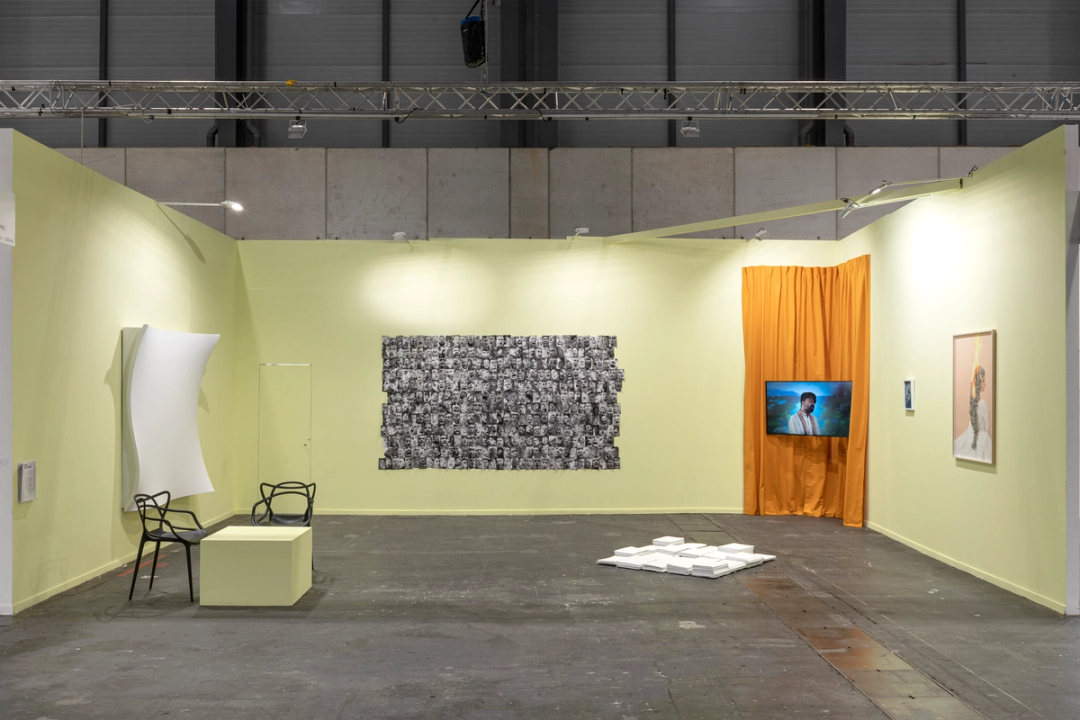All Rights Reserved

VOYEUR’S BLIND SPOT
“Appunto 1 - Antefatti 1” Pier Paolo PASOLINI, Petrolio (Indagine Letteraria sulle Stragi di Stato), 1973 From the beginning we find ourselves immersed in the text, both visual and written, there is no out-of-field, only that brief moment in which we frame, continuing with the montage of our inherited memories. Yet this fullness is full of gaps. When Foucault, during his inaugural lecture at the Collège de France, begins his speech by wishing that this would be "the point of his possible disappearance", the exhibition is based on ellipsis and on the capacity of his audience to complete these spaces with their aesthetic, political and cultural baggage. There are many attempts, in the cultural context of the second half of the last century, to work with, enunciate and articulate the void. From language and writing, philosophy and the visual arts. Pasolini's Petróleo (1973) "does not begin", Manganelli's New Commentary (1969) is constructed only as footnotes on a blank text, Klein not only makes a leap into the void (1960), but even produces an exhibition called "The Void" (1958). If we try to rationalise this "drive for emptiness" it is almost logical to think that since the discovery of the structure of the atom, which is the element that makes up matter, and we became aware that each atom contains 99.999999999% empty space and that if we extracted this emptiness from each human body all of humanity would be compressed into the volume of a lump of sugar. “It is like an image that he does not see, that is missing because it is there, with all the features of an image that would not appear and with which the incessant lack of relation, without presence, without absence, is the sign of a common solitude. He names her, knowing that she has no name, not even in his language, that beating of an undecided heart. Neither one nor the other lives, life passes between them, leaving them on the edge of space. Wordless in the midst of words.” Maurice BLANCHOT, Le pas au–delà, París, 1973 In 2021 each person on Earth was producing 1.7 megabytes (MB) of data per second, the following year global consumption was 97 zettabytes (1 ZB = 1,000,000,000,000,000,000,000,000,000,000 bytes), a figure that will almost double by 2025 to 181. It almost seems like a desperate attempt to fill the surrounding void with information, much of it in the form of images. We are both victims and executioners in this haemorrhage of pictures and words. Production, distribution, consumption... each individual is a repeater antenna that multiplies the torrent at every instant, serving as a transmitter chain of hegemonic ideological forms. Since the 1990s, almost in parallel with the popularisation of the internet, Michael Roy (1973, La Rochelle) has been confronting as a "creator" the complex role of the artist in an environment surrounded by images, questioning his role as a producer and the object/subject boundary linked to representation and discourse. Faced with the idea of generating new languages, he generates strategies that seek to exhaust them. Image and text, or text as image, become a material to be dissected, recontextualised or recreated. Taking on the complex task of writing about the words of others or photographing the images of others, while trying to be 'oneself' with the awareness that these inherited texts and images are us. “Since production - productive creation - is first and foremost at the service of the human constitution, we must try to ensure that the apparatuses (media) that have hitherto only been employed for reproductive purposes are applied for productive purposes.” László MOHOLY-NAGY, Producción reproducción, 1927 Every technique implies an apprenticeship, but this does not necessarily have to be conscious; the most deeply rooted educations are those that we receive without realising it. Since the appearance of mechanical image reproduction systems, we have been taught not only to produce them, but also to consume them. Assuming that we understood them while being turned into functional illiterates. Bertolt Brecht during what is known as the Second World War began to produce what he called "photoepigrams", images collected from the media to which he added a text, short poems that proposed other ways of looking at the image and events. The compilation of all of them was published in 1955 and its title, War Primer, further emphasised its pedagogical component and the need to generate a process of image literacy. Visualisation is one of the primary strategies of soft power and its persuasive component began to be analysed by psychoanalysis at the beginning of the last century and used for advertising purposes. Yet we consume them uncritically and are taught to produce them in the same way. In All Rights Reserved Roy presents a corpus of work built up over the last three years, "untitled" pieces in which some element gives us a clue, an element with which to begin the investigation. 1977, 1981, 1986... Dates that bring us closer to the author's life experience, but which emphasise the visual education processes of these periods. The images, found in photography manuals published in those years, are the ones offered as models. Seemingly neutral formal devices such as portrait, group photo, nude or still life pose not only a way of constructing the image, but also of preserving a specific status quo: Scandinavian beauties, female nudes, "traditional" families... the ways of photographing, and therefore seeing the world, perpetuated hegemonic values, turning visual education into a tool of social control. “The existence of an affective and abstract memory, through an aesthetic feeling can be transferred from one accumulation of sensations to another”Vernon LEE, Psychologie d’ une écrivain sur l’art (observation personnelle), 1903 But the exhibition is not only an exploration of the modes of transmission of power in which the representation of any "dissent" is excluded. Images have not only constructed our imaginary and our experience, they have become part of us. Our aesthetic memory takes hold in crisscrossing layers, making it difficult to distinguish between memory and the lived experience, ordering our emotions and the way we express them, even generating our own desires. Comparing our personal albums with other photographic archives will reveal parallels, but also echoes in a constant déjà vu, like a white noise of visual perception. The lives of others, their representation, is an invitation to fictional biography but also an opening to certain poetics. “Poetry itself can very well be found even where there is no poetry. It can even be the opposite or the rejection of poetry, that is to say, of all poetry. Poetry does not coincide with itself: perhaps it is this non-coincidence, this substantial impropriety, which properly constitutes poetry as such.” Jean Luc NANCY, Faire, la poésie, 1997 Taking the notion of the photographic image as a starting point, the artist has dissected examples and models that not only speak of how to construct it, but also propose a mode of situated visual literacy on which the dominant structure bases its modes of social control. Our narratives, imaginaries and desires, even those we identify as our own or dissident, have been elaborated on the basis of these mechanisms of visual control. By multiplying, fragmenting, contaminating and denying them, Roy proposes other poetics, other ways of inhabiting the world through estrangement and the search for an "other" place, immersed and surrounded by hegemonic narratives. The guerrilla strategies against the image or the text involve the emptying, accumulation, superimposition or recontextualisation of materials, and all of them are articulated around a conflict between discipline and chance. It is paradoxical to see how the 'investigative' gaze, that which thanks to the discourse of verisimilitude we identify as objective, is constructed under the same binomial. The discipline of repeating the same experiment, of entering empty rooms and documenting the remains of love rituals or the disorder of the guests, or becoming a narrator who pursues the writer in his process of discovering his own narrative. And in the case of Michael Roy everything leads to the narrative, not only because of his approach to the novel or because the literary text is one of his main sources of inspiration, but because this device of knowledge operates in the same way as the image, as a learned space in which the inherited materials nourish the gaps. “What the western scientist translates as speech or language sometimes turns out to be the work of the body itself, desire, sexual function, the verb too of course, and all this at the same time” Julie KRISTEVE (JOYAUX), Le Langage, cet inconnu, 1969. “I remember, in Boston, figuring out that a street with lots of antique shops on it might be good for cruising, and so I did a lot of walking up and down it (“window shopping”) but, as I was afraid to look at anybody, I didn’t do too well. (The understatement of the year.) So home I’d go to my “handy work”; often aided by men’s wear ads in back issues of Playboy magazine. Which was no easy feat, considering how carefully men’s fashion photos avoid any hint of a body underneath. (Underwear ads the most infuriating of all.) However, they did slip up every now and then. Like once I remember a very sexy two-page bathing suit spread that got a lot of use. And (in reference to “no easy feat”) that was long before it ever occurred to me that a little soap and water, or Vaseline, or something, might help.” Joe BRAINARD, I remember, 1975 Once again we are confronted with emptiness, with the fact that matter is full of it, therefore the distance -the void- between bodies is almost smaller than the bodies themselves and all of them generate a longing, a need to fill spaces and feel close to each other. Our ideas of distance and proximity have been complicated by trauma, the difficult construction of desire has become even more complex. This is not to say that it is not satisfied but to try to understand that the word, the verb, is a body that remains hidden because its visuality is full of "blind spots". In fact, in the exhibition, the limits of the images, their boundaries, are only broken when they are transformed into text, when the text becomes an amalgam of superimposed bodies or an inscription on our own. All of them enclosed in the white monochrome of a supposed neutrality that, deep down, what invites us is to fill it, to give meaning to our search to know the others. “We are all ridiculous. But it is my desire for you that eliminates the formula of that eternal ridiculousness.” COPI, The stairs at Sacré-Coeur, 1986 Text by Eduardo García Nieto Independent curator and educator
Technical Sheet

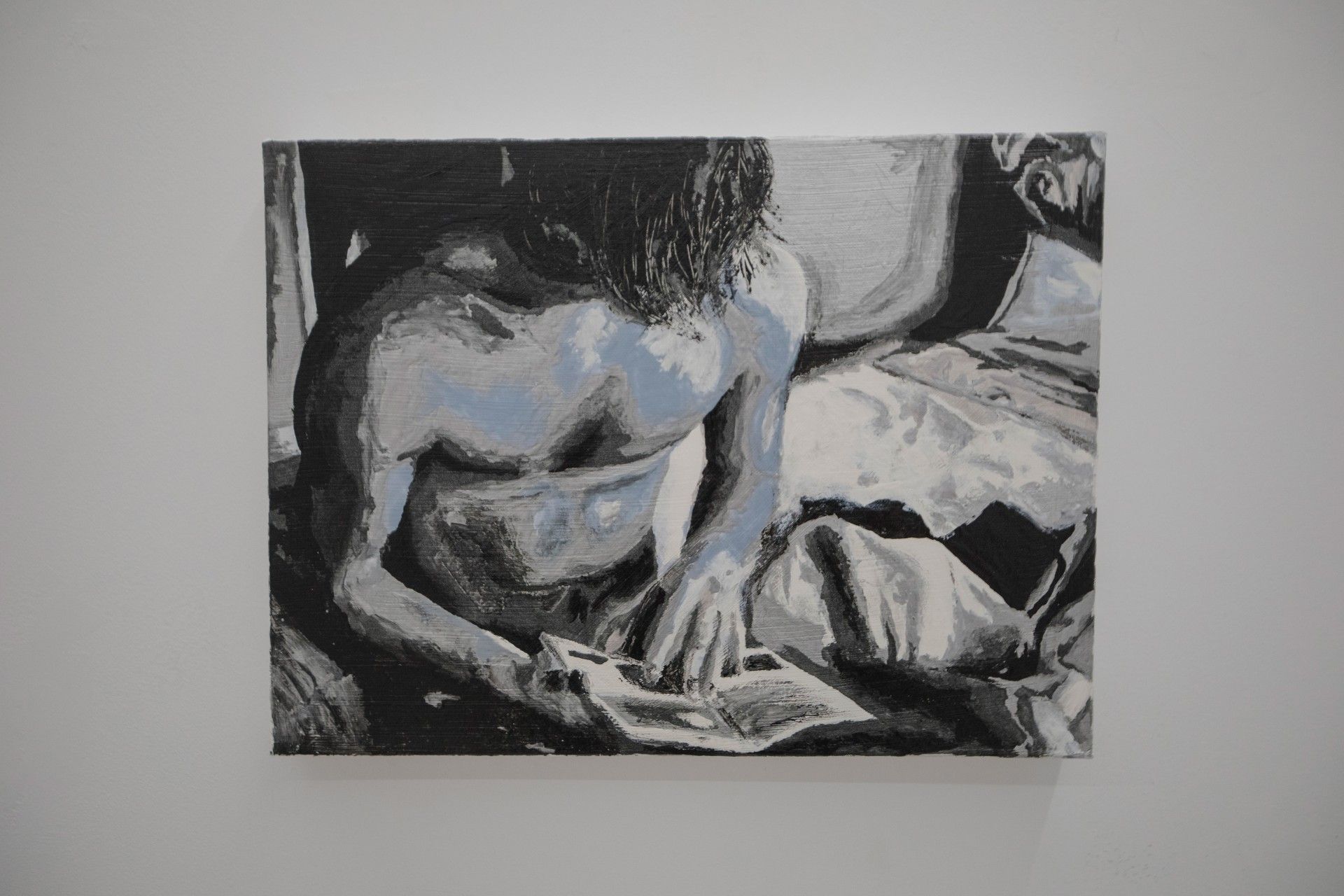

Available works
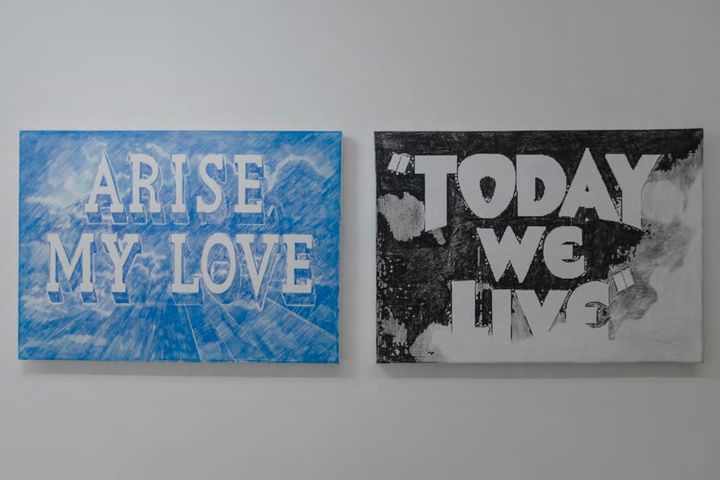
S/T (Arrise my love); (The End) Michael Roy
Carbon drawing on canvas 50 x 70 cm (x2) Unique pieces
This work has been exhibited in the following exhibitions: All Rights Reserved
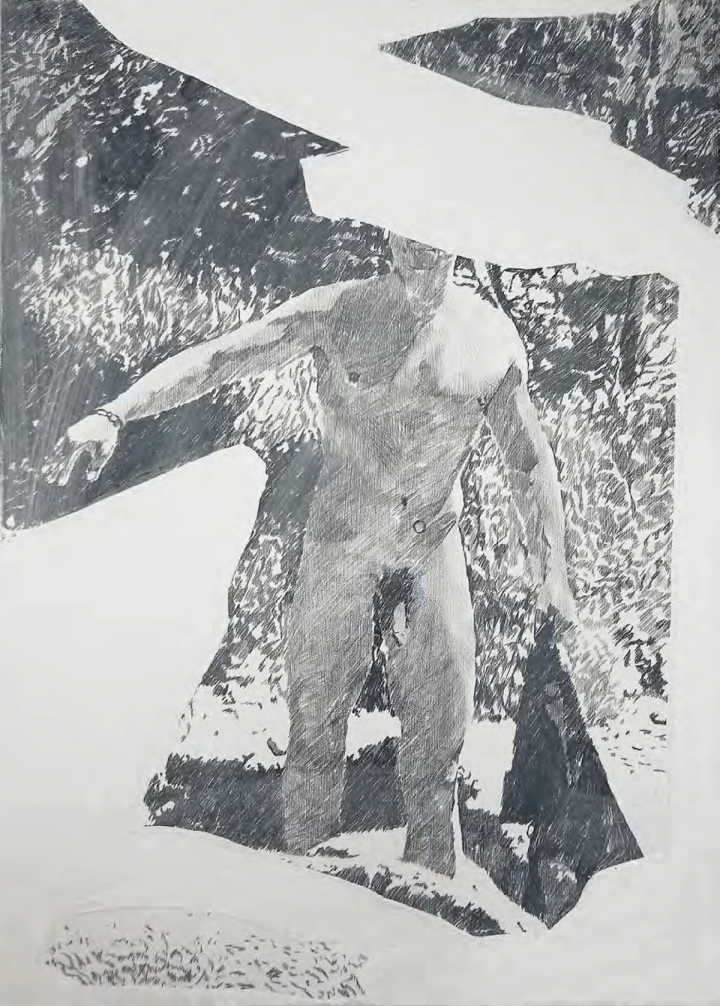
S/T Michael Roy
Carbon drawing on canvas, acrylic and varnish 50 x 70 cm Unique piece
This work has been exhibited in the following exhibitions: All Rights Reserved

S/T Michael Roy
Nail polish on canvas 30 x 40 cm Unique piece
This work has been exhibited in the following exhibitions: All Rights Reserved

S/T Michael Roy
Nail polish on canvas 40 x 30 cm Unique piece
This work has been exhibited in the following exhibitions: All Rights Reserved

S/T (L’usage de la photo, Annie Ernaux & Marc Marie) Michael Roy
Marker on canvas, acrylic, varnish and felt 100 x 160 cm Unique piece
This work has been exhibited in the following exhibitions: All Rights Reserved

S/T (Je sors ce soir, G. Dustan) Michael Roy
Marker on canvas, acrylic and felt 50 x 70 cm Unique piece
This work has been exhibited in the following exhibitions: All Rights Reserved

S/T (Victor) Michael Roy
Pencil drawing on paper 150 x 190 cm Unique piece
This work has been exhibited in the following exhibitions: All Rights Reserved

S/T (Eric) Michael Roy
Color photography 50 x 75 cm Unique piece
This work has been exhibited in the following exhibitions: Articulations of Desire, Vol. 2 All Rights Reserved

S/T Michael Roy
Paper mache, paint, felt, metal Variable dimensions Unique piece
This work has been exhibited in the following exhibitions: All Rights Reserved

S/T (1977, 1980, 1981, 1986, 1995, 1997) Michael Roy
6 videos on phone Variable lengths
This work has been exhibited in the following exhibitions: All Rights Reserved

S/T Michael Roy
50 photocopies Variable dimensions Ed. 1/3 + 2 AP
This work has been exhibited in the following exhibitions: All Rights Reserved

S/T Michael Roy
Wallet and Photograph Variable dimensions Unique pieces
This work has been exhibited in the following exhibitions: All Rights Reserved

S/T Michael Roy
Installation of 200 photographs Variable dimensions Ed. 1/3 + 2 AP
This work has been exhibited in the following exhibitions: All Rights Reserved

S/T Michael Roy
Collages on paper 29.7 x 21 cm (each) Unique piece
This work has been exhibited in the following exhibitions: All Rights Reserved
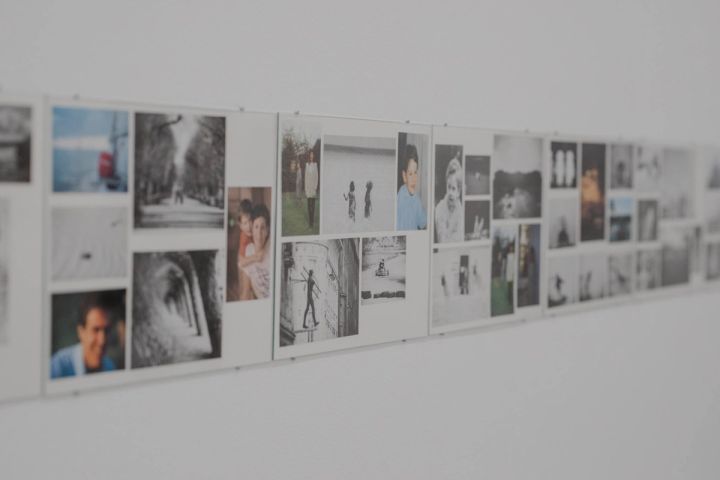
S/T (1986) Michael Roy
21 collages on paper 29.7 x 21 cm (each) + Video Unique piece + 2 PA
This work has been exhibited in the following exhibitions: All Rights Reserved

S/T (1995) Michael Roy
16 collages on paper 29.7 x 21 cm (each) + Video Unique piece + 2 PA
This work has been exhibited in the following exhibitions: All Rights Reserved

S/T Michael Roy
Collage on paper 24cm x 32cm (Price per unit)
This work has been exhibited in the following exhibitions: Articulaciones del Deseo All Rights Reserved
Related exhibitions

Articulations of Desire, Vol. 2 Various Artists
From May 23 to August 8, 2025

Articulations of Desire Various Artists
From June 7 to August 2, 2024

Mixtape Vol. 1 Christto & Andrew,Carlos Sáez,Antonio Fernández Alvira,Antoine et Manuel,Andrew Roberts,Aggtelek,Diego del Pozo Barriuso,Fito Conesa,Michael Roy,Mit Borrás,Momu & No Es,Natacha Lesueur,Ovidi Benet,Vicky Uslé,Octavi Serra,Sarah & Charles,Carmen Ortíz Blanco,Pablo Durango
From September 15 to November 25, 2022







